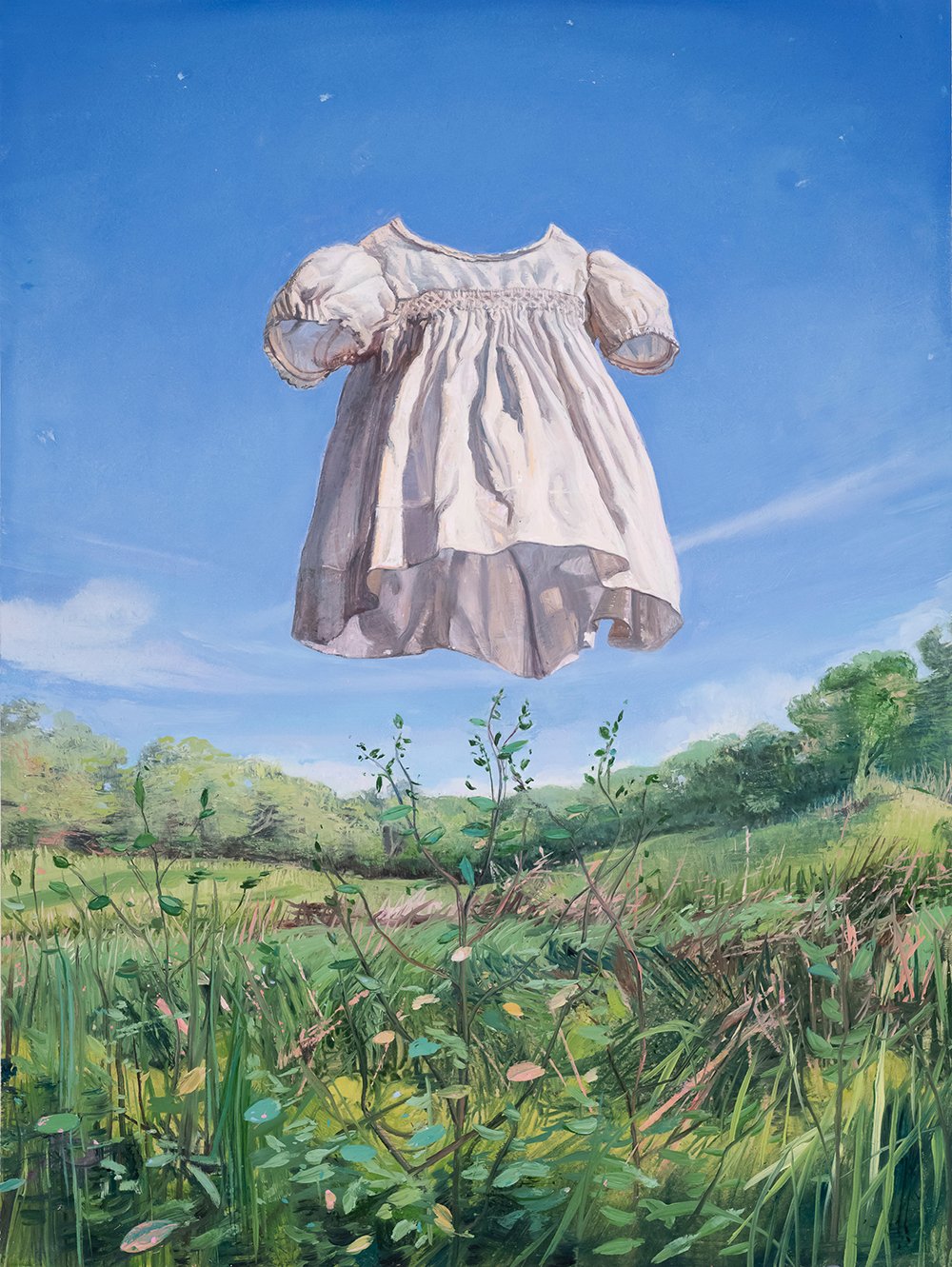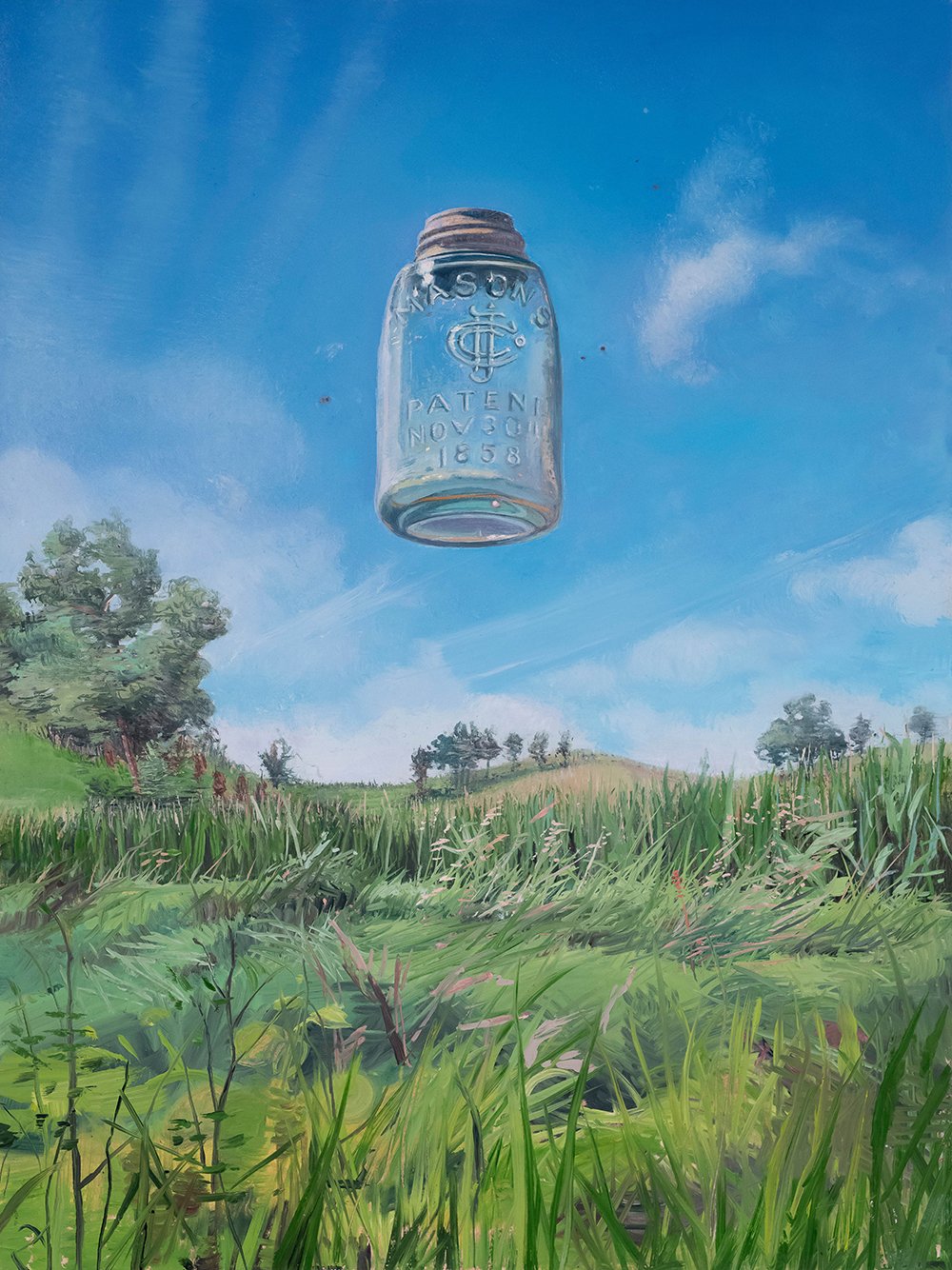Melanie Vote
Melanie Vote
Melanie Vote received her BFA from Iowa State University and her MFA in painting from the New York Academy of Art. She grew up on a functional farm, but has lived and worked in NYC for over 20 years. Her work straddles these two worlds, investigating the complexities of the human-land relationship, the cyclical nature of all life, and the impossibility of permanence.
In temperate months she works remotely, painting outside. She is a visual scavenger collecting passages, then returns to the studio to reconstruct layers of a place, weaving them together into open-ended narratives.
Vote was a recipient of a Pollock-Krasner Foundation Grant in 2007 and has been awarded many residencies including the Vermont Studio Center, Jentel in Banner, WY, AHAD in Abu Dhabi, UAE, the Grand Canyon, the Weir Farm program in CT, and most recently, Cill Rialaig in Ireland. Vote has taught at The New School, NYAA, NJCU, and Pratt Institute. Additionally, Vote has been a visiting artist at numerous schools including the Pennsylvania Academy of Fine Art. Her exhibition, The Washhouse, Nothing Ever Happened Here, was at Equity Gallery in 2020. Vote is presenting her newest works in a two person show, curated by Liz Garvey of Garvey|Simon Gallery at DFN Projects in NYC, October 2023.
Melanie Vote “Stain Dress” 2020
Artrepreneur: Are there any recurring themes or motifs in your artwork? What draws you to explore these subjects repeatedly?
Melanie Vote: The natural world in general, trees in particular at the moment. I love trees, and sometimes one will stop me in my tracks and almost beg me to paint them. Their bark might feel like human skin, or I’ll really see a face or body; often, this makes me audibly laugh and brings levity to whatever else is on my mind, such as my underlying concern with the environment and climate change. Trees possess a certain wisdom that I admire. They remain still, have a network of underlying roots reaching down as far as their canopy reaches up, work in community with each other, provide housing for a multitude of insects, and create carbon sinks that clean the air. They offer shade to cool people and everything under their branches. Often, I just swoon when I pass by a tree that lures me in, and I just want to paint them, to hang out with them, to understand them. I want to translate this reverence I have for them, if possible, give a voice to them—a voice that speaks to our naturally human-centric society, which may, by our conditioning, just take them for granted.
Melanie Vote “Stain, Overalls” 2020
ATP: Can you share an instance where a viewer interpreted your work differently than you had intended? How did you respond to their interpretation?
MV: Absolutely. Due to the nature of semiotics, people always see things through their own cultural lens, and one can come to expect this. In general, it is wonderful; I want to hear what they see and even try to make my work open-ended. It is the person that, in part, completes the artwork.
Just recently, someone saw a tree painting of mine that had a trail marking on it. To me, it just looked like a cyclops and it made me laugh as I was walking through the wooded area one very hot and dryer than usual August day. To him, it looked like a marking that implied that the tree was getting chopped down. I enjoyed that interpretation and did not even tell him differently. It was not important to me.
ATP: Can you describe the role of intuition in your creative process? How much do you rely on instinct versus planning when creating a painting?
I paint realistically, so sometimes I paint what calls to me; some subjects have an allure or complexity that makes me wish to stay and paint. Later, I add something to the picture that invites a narrative; that is where the intuition part comes in. However, it could be argued that what initially calls me to start the painting is intuition as well. I guess it is always back and forth. To finish the painting, it requires planning, stepping back, literally making a list, and creating a plan of what and how to do to resolve the work.
Melanie Vote “Evidence Jar” 2020
How does the process of creating art affect your mood or mindset? Do you find it therapeutic or challenging?
Both. I need to paint, in part, to digest the world around me and the experiences I have. I always feel best when I am painting every day. The act of painting sets the creative cycle into motion, and more ideas come while in the flow. Of course, it is challenging too. In fact, I love painting because of that. Even though I studied painting in a traditional manner, it is never formulaic. Sure, the technique is a great starting place, but painting for me is filled with unpredictable passages, and that is both exciting and challenging.
How do you know when a painting is complete? Is there a particular feeling or moment that signifies its finished state?
MV: Recently I have come to the conclusion, I need to feel that the painting is resolved, not finished. Resolved, means to work out the problems, just enough to let it go and move forward. Finishing implies (in my mind) a sort of death to a painting, a smothering of the spirit of the work, which leads to having to rework it and finally bring it back to life. The feeling of resolve/finish might be likened to blowing up a balloon, cleaning or organizing a room. Everything is where it should be and if you take one thing away or add something too it, it would be a mess or in a state of imbalance.
Melanie Vote “Main Window Ensemble” 2023
ATP: Are there any specific features or resources on artrepreneur.com that have been particularly valuable in advancing your artistic goals?
MV: I find the platform in great place to learn about and meet new artists and to connect to a new audience for my own work. I appreciate the comprehensive nature of Artrepreneur’s services, including the Open Call Directory and the dedicated section for Open Call Winners. These features not only provide artists with visibility but also serve as a testament to Artrepreneur’s commitment to recognizing artistic talent. Moreover, the presence of expert curators and the focus on being “Commercial Ready” are invaluable resources for artists looking to navigate the art market successfully.
ATP: Have you found the platform to be effective in connecting you with opportunities, promoting your work, or expanding your network within the art community?
MV: Yes, absolutely! While I have yet to take advantage of the open calls myself, I am seriously considering participating in the future based on the positive experiences I’ve had interacting with artists through the platform. The encouragement and professional advice I was able to offer during my Zoom critiques were made possible thanks to Artrepreneur’s supportive environment, and for that, I am truly grateful.
To view more of Melanie’s work please visit her Artrepreneur profile.




